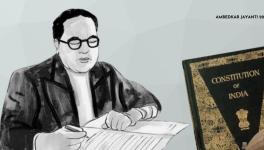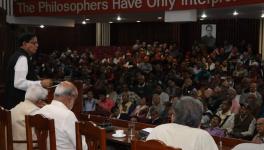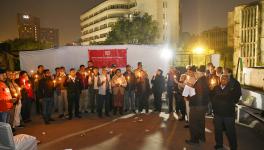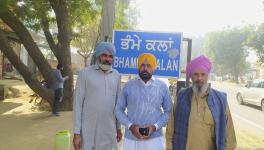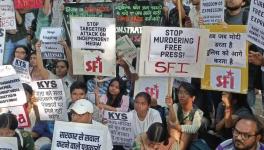Dissent-in-Waiting: What India’s Vacant Streets Symbolise
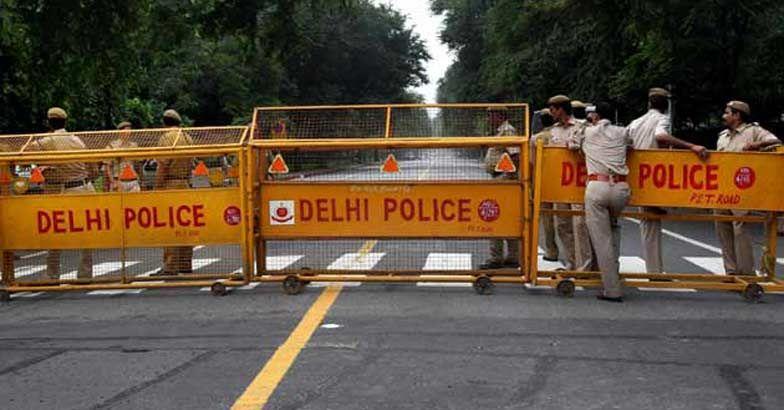
Representational image.
There seems to be an historical irony unraveling itself in India. There appears to be a mood for protests across the globe, while India is yet to experience anything close to this. In the past few months, and in the years before that, street protests have rocked nations in Latin America, Africa, Europe and North America.
An earlier round of major protests, famously referred to as the Arab Spring, broke out in the Middle East and Egypt in 2010 against authoritarian governments and demanding democracy. It spilled over to North America in 2011 during the hey-day of Occupy Wall Street, when Zuccotti Park in New York was taken over by students, immigrants, the unemployed and others demanding accountability from corporations. It then spread to Brazil in 2013, where it was called the Brazilian Spring or the Free Fare movement, a nationwide demand for reduction of prices in public transport and better access to education.
Yet again nationwide protests are going on in various parts of the world, all with similar demands against what we understand as neoliberal reforms. In the last few months we witnessed massive protests in Hong Kong in China this June, against new extradition laws and erosion of its autonomy. This was followed by major protests in Chile in Central America against a hike in public transport costs, and in Lebanon against new taxes. Much earlier, we witnessed violence and street protests in Venezuela against proposed demonetisation of its currency.
India has gone through most of these issues without a major nationwide protest. Demonetisation, which has had a debilitating impact on the informal sector, and on growth and employment opportunities, has in fact brought rich electoral dividends to the current dispensation and even on second thoughts its success in fighting corruption has been suspect. People, by and large, continue to trust the intentions of the current dispensation and its leadership in at least making an earnest attempt—saaf niyat—in fighting black money and the black economy.
Similarly, India went through tax reforms in implementing the Goods and Services Tax without much of a protest. Even state and regional governments did not get down on the streets. In spite of steep price hikes in most commodities and adverse impact on business and profits there is no sight of palpable anger, either in terms of organised protests or in terms of electoral outcomes.
India has had unprecedented agrarian crisis, and continued farmer’s suicides across various regions, including Telangana, Maharashtra, Bundelkhand, Bihar and parts of central India. Though we witnessed farmer’s protests against lack of procurement prices and dwindling fortunes close to the general elections in 2019, they soon died out and failed to produce any major impact on the electoral outcomes. It was, however, felt that these issues did have some impact on the electoral results in Assembly elections in Rajasthan, Madhya Pradesh and Chhattisgarh.
The only recent street protests we witnessed was by the students of Jawaharlal Nehru University (JNU), against a steep fee hike proposed by the administration. It was however Delhi-centric and attracted some media attention when compared to the near black-out of such issues in the mainstream, especially electronic media. This protest was not nationwide and failed to bring other sections of the society or students in other parts of India unto the streets the way we witnessed in Brazil in the past or in Hong Kong currently.
India, which was once known for robust social mobilisation of various kinds, is struggling to create impact on the ruling dispensation today. Today we do not even have major local or regional-level protests shaking the streets. The recent incident, of close to fifty thousand employees of the Road Transport Corporation being fired in Telangana, also fizzled out.
What do the vacant streets symbolise? Why are the farmers, students, urban and rural poor, workers in the informal and unorganised sectors, traders, tribals, dalits and others withdrawing from street protests? Does it signify the failure or ironically the success of electoral politics and democracy in India? Globally, neoliberalism has been providing the framing explanation for why there have been massive outbreaks of street protests in various parts of the world, but not so in India, in spite of the fact that India went through precisely the same set of global economic policies.
A possible explanation for this somewhat inexplicable mood seems to be the changing spatial imagination in India after globalisation. Has India become more provincial after it went through the motions of globalisation, or is it that regions have stopped believing in their capacity to mobilise and impact national policies? Has India, in spite of the continued rhetoric of “cooperative federalism” become more unitary with a strong Centre and weak states?
Mediatisation of politics has disallowed the power of social organisations to set the agenda and imagination of different sections of the society. Electronic media—unlike the print revolution in India—has been completely pro-corporate and its impact in controlling the larger narrative and imagination seems to be way too powerful. Similarly, the current right-wing populist government has continued to manage to convince people of bringing major structural-institutional change that will both take time and would involve initial hardships that will eventually fructify into something more fruitful.
This partly also reflects, unlike in many other parts of the world, near complete distrust of institutions. Protests require some basic trust in institutions being responsive. The anger against institutions has been usurped by the current ruling dispensation, and it is projected as working on their behalf in setting institutions right.
Protest has come to be depicted as a pastime of the privileged, and negotiation and trust in the ruling dispensation the conviction of the common people. The recent false narrative of “urban Naxal” leading to incarceration of social activists such as Sudha Bharadwaj, Vara Vara Rao, Shoma Sen and others is playing out in this unfavorable context.
India is passing through a strange moment of discontent without anger, and growing inequalities and its accompanying hardships on majority population without accompanying protest politics. Whether this would mean a need to recalibrate the modes of working of democracy or weakening of democratic imagination and aspirations will remain pertinent in days ahead.
The author is associate professor at the Centre for Political Studies, JNU. The views are personal.
Get the latest reports & analysis with people's perspective on Protests, movements & deep analytical videos, discussions of the current affairs in your Telegram app. Subscribe to NewsClick's Telegram channel & get Real-Time updates on stories, as they get published on our website.









